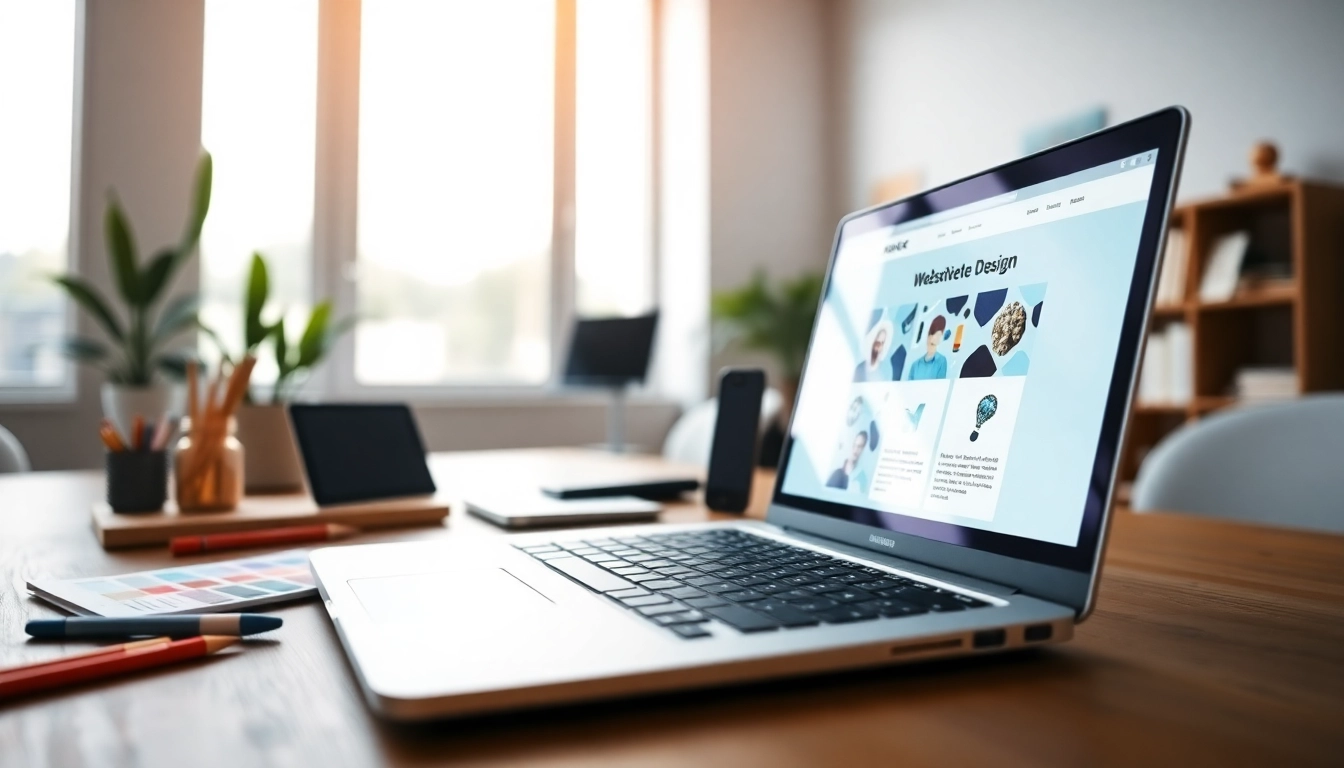Understanding the Basics of Website Design
In an era where digital presence is paramount, understanding website design becomes essential for businesses and individuals alike. A well-designed website serves as a central point for promoting brands, engaging customers, and driving sales. Website design is not just about aesthetics; it encompasses a wide array of elements that work together to create an impactful online experience. This guide will delve into various aspects of website design, equipping you with the knowledge needed to create effective and engaging websites.
Defining Website Design
Essentially, website design is the process of creating and organizing the elements of a website to ensure it is both visually appealing and functional. It involves multiple disciplines, including web graphic design, interface design, authoring (which might involve standardized code and proprietary software), user experience design, and search engine optimization to name a few. In the age of information overload, clarity and accessibility become crucial in how users navigate and utilize a site’s resources.
Key Elements of Effective Website Design
To create websites that stand out, several key elements must be considered:
- Layout: The arrangement of content should facilitate easy navigation and a coherent flow of information.
- Color Scheme: The colors chosen should align with the brand’s identity and evoke appropriate emotions.
- Typography: Font selection affects readability and should maintain a hierarchical structure that makes scanning content easier.
- Imagery: High-quality images and graphics can significantly enhance the user experience.
- Responsive Design: Ensuring that a website functions well across different devices—be it desktop, tablet, or mobile—is critical.
Common Mistakes in Website Design
Website design is an intricate process, and several common pitfalls can hinder its effectiveness. Some prevalent mistakes include:
- Overcomplicating Navigation: Users should be able to find information quickly without excessive clicking.
- Neglecting Mobile Users: Websites that are not mobile-friendly drastically reduce engagement.
- Ignoring SEO: Even the most beautiful sites can fail if they are not optimized for search engines.
- Using Too Many Fonts and Colors: Consistency in design elements enhances professionalism.
User Experience in Website Design
User experience (UX) focuses on how users interact with a website. A positive UX leads to higher satisfaction rates and increases the likelihood of conversion.
The Importance of Usability
Usability refers to how easily and intuitively users can interact with a website. A website with high usability increases user satisfaction and helps retain visitors. Key factors influencing usability include:
- Speed: Fast loading times enhance user satisfaction.
- Accessibility: Design should accommodate users with disabilities.
- Clear Call to Action (CTA): CTAs should be strategically placed and clearly worded to guide users’ next steps.
Designing for Your Audience
Identifying the target audience is crucial in designing an effective website. By understanding who will use the site, you can tailor the design to meet their preferences and needs. Create user personas based on demographic data, preferences, and behaviors. Conduct user testing to gather feedback and refine the design based on insights gained.
Testing and Feedback in Design
No design is flawless on the first attempt. Regular testing is vital to identify problem areas. Employ A/B testing to compare different design elements or layouts, thereby determining which performs better in terms of user interaction and engagement. Gathering user feedback through surveys and usability testing sessions can provide essential insights that inform iterative design adjustments.
Visual Elements of Website Design
Visual design plays a crucial role in a website’s overall appeal and usability. The aesthetics of a website can deeply influence users, guiding them toward desired actions.
Choosing the Right Color Schemes
A well-thought-out color scheme enhances brand identity and influences user emotions. When selecting colors, consider the psychological effects of colors and how they resonate with your audience. Tools are available to help create color palettes that work well together, ensuring visual harmony throughout the site.
Typography Choices that Enhance Readability
Typography is more than just font selection; it includes sizing, spacing, and line height. A well-chosen typeface enhances readability and contributes to the aesthetics of the website. A balanced typographic hierarchy helps users scan content effectively and navigate through the information with ease.
Imagery and Graphics: Best Practices
Images and graphics grab attention and can convey messages quickly. Using high-resolution images, optimized for fast loading, enhances the visual impact without sacrificing performance. Consider using a mix of graphics, photos, and animations to enrich content and provide a varied user experience.
Responsive Website Design Principles
As more users access websites via mobile devices, responsive design has never been more critical. A responsive design ensures that a website adjusts seamlessly to different screen sizes, delivering an optimal viewing experience across all devices.
Importance of Mobile Optimization
With mobile devices accounting for a significant portion of internet traffic, optimizing your website for mobile is essential. Mobile optimization enhances usability, improves load times, and can significantly impact your search engine rankings. Implementing a mobile-first design strategy ensures a seamless experience for all users, regardless of device.
Flexible Layouts and Media Queries
Responsive websites utilize flexible grid layouts in combination with media queries to adjust and rearrange elements based on screen size. This adaptability ensures that content is easy to read and interact with, regardless of resolution. A well-structured CSS can manage this layout dynamically without compromising aesthetics.
Ensuring Cross-Device Compatibility
Testing across various devices and browsers is paramount for establishing a consistent experience for all users. Tools are available to assist with testing and provide insights on how your website appears and behaves across different platforms.
Future Trends in Website Design
The landscape of website design is ever-evolving, influenced by technological advances and changing user expectations. Staying abreast of trends can provide a competitive edge and attract a broader audience.
Integrating AI and Automation into Design
Artificial intelligence (AI) is transforming website design, enabling designers to personalize elements based on user behavior and preferences. Automated tools can analyze user engagement and suggest enhancements, allowing for data-driven design improvements. Not just limited to visuals, AI can also assist in creating dynamic content tailored to individual user journeys.
Sustainability in Web Design
Environmental sustainability continues to gain traction, and web design is no exception. Designing websites that utilize energy-efficient practices such as minimizing file sizes, optimizing coding techniques, and incorporating eco-friendly hosting solutions aligns with the growing demand for sustainability. Users are increasingly drawn to brands that reflect their environmentally conscious values.
Personalization Techniques in Modern Design
Personalization enhances user satisfaction by delivering tailored experiences based on individual preferences. Techniques such as dynamic content replacement, adaptive layouts, and personalized recommendations can lead to greater engagement and loyalty, making users feel more valued.



